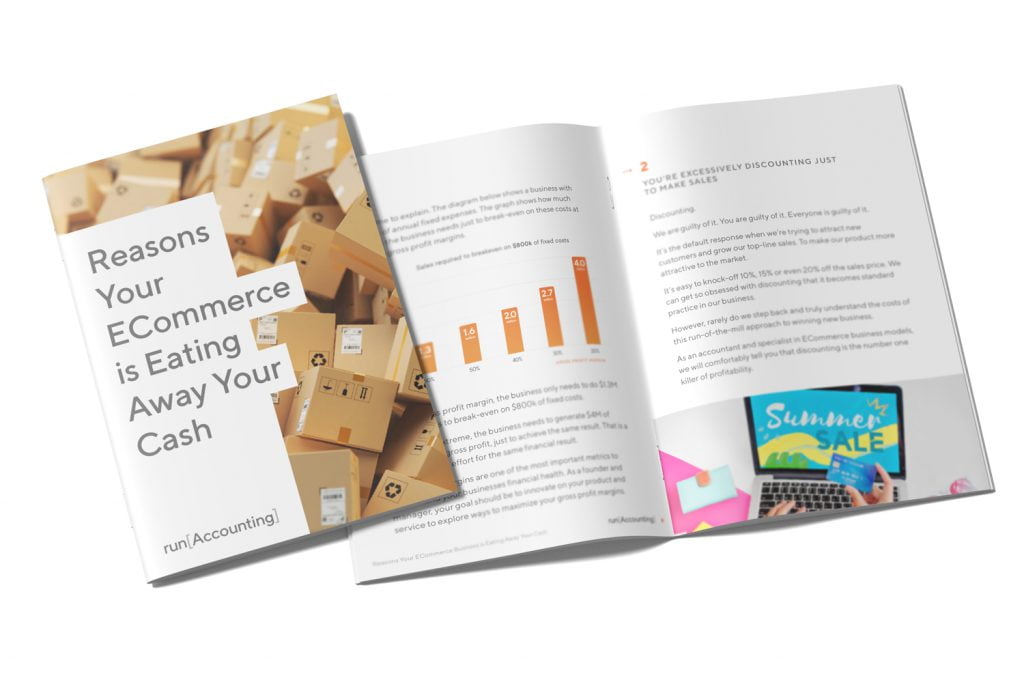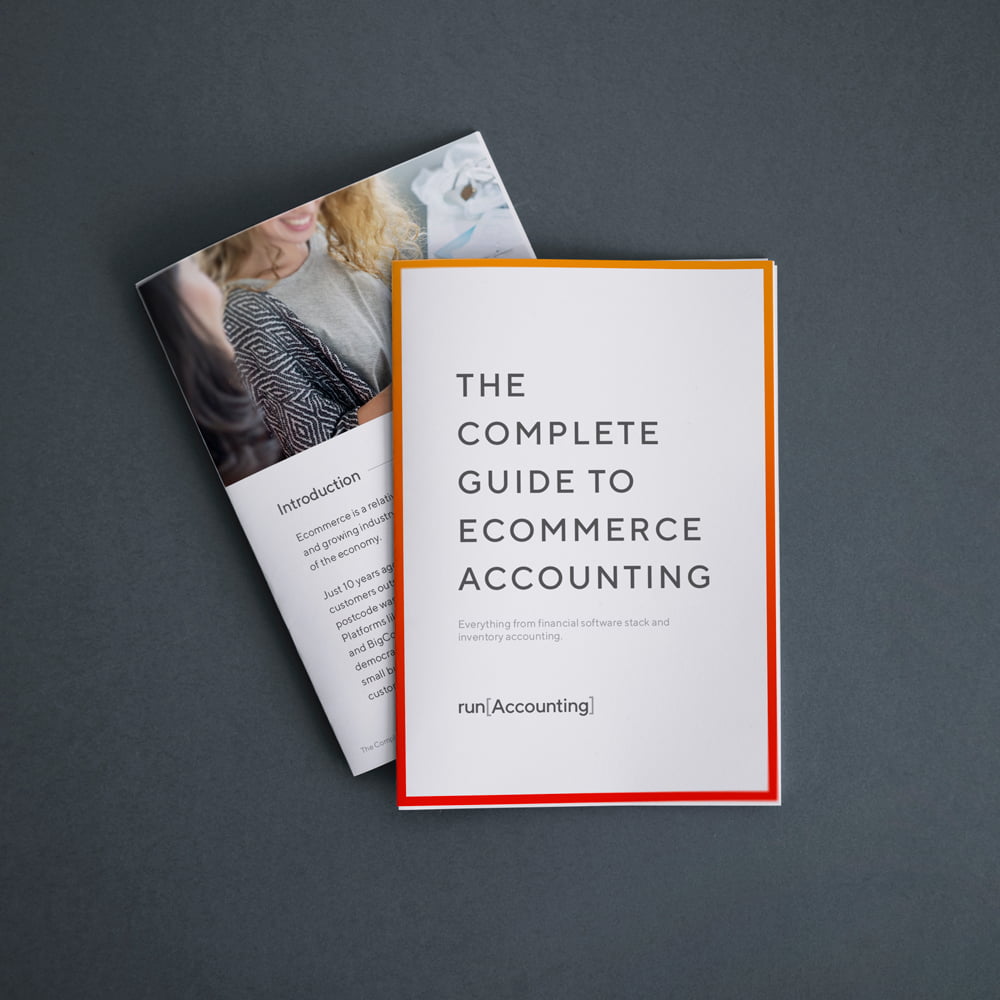Canadian eCommerce businesses’ biggest market to sell to is the United States. With access to ten times the customer population, it represents an essential growth channel and lots of competition. However, Canadian businesses face a lot of uncertainty and unpredictable change from the southern border.
We’ve come up with this guideline to help your business decide how to position and establish access to American customers through Amazon.
Wondering why your ECommerce business is bleeding cash?
Setup your Amazon Seller Account
Requirements for Account Setup
- Residency Certification
- only for countries that are accepted for registration
- permanent residency or citizenship status for Canada
- Residential Address
- Working Phone Number
- A valid credit card (international)
- Additional supporting documentation may be required:
- Other government-issued forms of identification:
- Passport
- Permanent residence card
These documents must show:
- Name
- Date of Birth
- Expiration Date
- Bearer’s signature
- Country of Issuance
- For Businesses:
- Business Registration Certificate
- Proof of Business Address
Bank Requirements
- A Canadian Bank Account that’s accepted by Amazon.
- 3.5% currency conversion fee upon transfer of funds to Canada for US Sales.
- USD Checking Accounts from a Canadian Bank won’t be accepted (you might incur double conversion fees)
- Other Options:
- A separate cross-border USD checking account.
- Banks like RBC, BMO, & TD all offer these types of business accounts.
- Virtual Banks like OFX & Transferwise that offer online banking that also functions like US Bank Accounts.
- A separate cross-border USD checking account.
A separate bank account will help save you some conversion costs if you want to pay your suppliers in US Dollars from your account without paying any additional fees.
Canadian Citizens Establishing a U.S. Business Entity (LLC, S-Corp or C-Corp) who want to register for a Seller Account on Amazon
- No additional requirement to open a US entity to start selling on Amazon in the US.
- Might add another layer of compliance and regulation complexities.
Organizational Structure for Amazon Business
- Sole/Individual Proprietorship
- Business (Corporation/Partnership)
Incorporating
- Sell as an individual seller or sole proprietor. You are not required to be a corporation.
- Factors such as revenue, other sources of income, etc. come into play when deciding if you want to open a corporation.
Securing an Employer Identification Number for a Canadian Seller on Amazon
not required for an Amazon.com Account; Except when:
- Utilizing Fulfilled by Amazon (FBA) services and importing goods into the United States then you will need an EIN for filing your ITRs with the IRS as well as Sales Tax and State Tax with individual states.
- The vendor from the US requests to provide a W8 or W9.
How do I Obtain an EIN?
- Call the Internal Revenue Service at 1-267-941-1099, press Option 1 (not a toll-free number).
- Answer all questions from the IRS Agent such as:
- Are you personally based in the United States?
- What country is your business located?
- What is your mailing address?
- What type of business entity are you?
- What is the legal name of your business entity?
- When’s the start date of your business?
- How many people are working in your business?
- Reason for your application for EIN?
- The IRS will then send you a letter of receipt upon completion of your application? (Make sure to save the letter when you receive it.)
NOTE: Upon approval of your EIN, you’re required to file US Income Tax Returns on an annual basis for that entity. Your compliance cost increases as such, needing an accountant will be apparent to help file your ITR.
- Request for discontinuance of your EIN should be coursed through the IRS so they can close your account in writing.
- Accounts cannot be closed if you have any outstanding taxes and returns with the IRS.
Requirement for Forms W9 & W-8BEN-E
- W9 identifies you as a US Tax Payer. It can only be provided by US individuals or tax entities.
- The W-8BEN-E form (for individuals) and W-8BEN-E (for businesses) identify you as a foreign entity.
- In accordance with the law, non-resident payments are subject to a 30% US withholding tax.
- These forms enforce your status as a foreign person or entity and decrease your withholding tax to 0% depending on the tax treaty between the US and the country where the entity is a resident.
- The US-CANADA Tax Treaty reduces the withholding taxes paid by foreign Canadian entities to 0%. It’s necessary to have that form available in any of the US vendors who request for it.
NOTE: Form W9 & W-8BEN-E does not in any way unbind you from the responsibility to file US Income Tax Returns if you are earning effectively in the United States.
Requirements for Income Tax for Amazon Sellers
Structure of a Canadian Corporation for Amazon E-Commerce Business.
Provincial vs. Federal:
- In terms of tax – there’s no difference. Both corporations are taxed the same.
- The difference falls on the name protection. Your business name is protected across all provinces with a federal corporation; while it is only protected in the province of incorporation for provincial.
Pros and Cons of Incorporating Amazon E-Commerce Business.
Pros
- Tax Deferral of a significant portion on the first $500,000 of the net income.
- Salary vs. Dividends options as tax planning opportunities
- Limited Liability Protection
Cons
- A higher ground for compliance, accounting fees, & maintenance
- Need for more planning since money belongs to the corporation
- Stricter rules in obtaining a US Insurance for a NON-US entity.
Why is it good to incorporate?
It is recommended to incorporate when
- You need to limit your liability
- Profits earned by your business are not needed for your personal expenses.
- For beginner accounts and you’re still getting the feel to limit compliance costs.
What are the Income Tax Obligations as an Amazon Seller in Canada?
- For sole proprietorship:
- Global income is subject to Canadian tax.
- Operating as a sole proprietor or a partnership, it’s mandatory to complete Form T2125 for your Amazon E-Commerce account.
- For multiple businesses, you will need to fill out separate T2125 forms for each business.
- The net for the expenses and revenues for your businesses will be added under personal income on your T1 return and will be taxed under personal marginal tax rates.
- Tax returns need to be filed by the 15th of June annually with interest starting to accrue on tax amounts that are due from April 30.
- For corporations:
- Form T2 needs to be filed for corporations within six (6) months of the fiscal year with accrual interest on tax amount due from three (3) months after the fiscal year-end.
Canadian Sales Tax for an Amazon Seller
What is Sales tax?
- An amount that a state or province impose on businesses to collect from customers on behalf of the government.
- It’s charged on top of the sales price for the product and that is then remitted to the government on sales tax filing season.
Sales Tax vs. Income Tax
- Sales Tax is not coming out of businesses’ pockets; while
- Income Tax is charged by governments on the net amount between revenues and expenses earned by a business during a specific period of time.
- An income tax is a business expense.
Requirements for Sales Tax (GST/HST/PST) in Canada for Amazon Sellers.
- Businesses (Canadian or Non-Canadian) that are operating in Canada should charge and remit sales taxes on the product they sell if the taxable sales revenue in the last or any last four (4) consecutive quarters exceeded $30,000.
Important acronyms and abbreviations:
- GST – Goods and Service Tax (charged by the federal government)
- HST – Harmonized Sales Tax (charged by the federal government)
- PST – Provincial Sales Tax (charged by the provincial government)
- RST – Retail Sales Tax ( charged by the provincial government)
- QST – Quebec Sales Tax (charged by the Quebec provincial government)
The sales tax percentage depends on:
i. The province where your business is located (i.e., place of business)
ii. The province where the product is delivered (i.e., place of supply)
These are the current GST/HST sales tax rates for product delivery to these provinces:
- 5% GST in British Columbia, Alberta, Manitoba, Northwest Territories, Quebec, Saskatchewan, Nunavut, and Yukon.
- 13% HST in Ontario.
- 15% HST in Newfoundland, New Brunswick, Labrador, Nova Scotia, & Prince Edward Island.
- In addition, if the business location is in a non-participating province (i.e., non-HST province), it has to collect the provincial taxes (PST/RST/QST).
- With the exception of Quebec, there’s no need to collect PST/RST if there is no physical presence in the province.
Example 1:
- If your business location is Ontario, selling to a BC customer requires you to charge a 5% GST on top of the sale price.
Example 2:
- If your business location is British Columbia and you ship your product to Manitoba, you’re required to collect 5% in GST from the customer.
Example 3:
- If the business location is in BC and it shipped a product to a customer who’s also in BC, you’re required to collect 5% in GST and 7% in PST. The GST portion needs to be sent to the federal government where the PST amount needs to be collected for the provincial government.
As of January 1st, 2019:
- Major changes were observed in the provincial sales tax legislation in Canada.
- For residents in Quebec, starting 01/01/2019 online sellers have to register and start collecting QST on top of GST regardless of their location in the world.
Type of Sales Tax to be Collected for Amazon FBA Services for Canadian Sales
- Depending on the location of the Amazon Warehouse from where the purchase order is dispatched.
- Federal sales taxes (GST/HST) should only be collected if the location of the Amazon Warehouse is in a participating province (i.e., HST province)
- If a sale was made where the location of the warehouse is in a non-participating province (i.e., non-HST province), collection of federal sales taxes (GST/HST), and provincial sales taxes (PST/RST/QST) should be made for that sale.
| Customer Location | ||||||||||||||
| Business Location | AB | BC | MB | NB | NL | NT | NS | NU | ON | PEI | QC | SK | YT | International |
| Alberta (AB) | 5 | 5 | 5 | 15 | 15 | 5 | 15 | 5 | 13 | 15 | 14.975 | 5 | 5 | 0 |
| British Columbia (BC) | 5 | 13 | 5 | 15 | 15 | 5 | 15 | 5 | 13 | 15 | 14.975 | 5 | 5 | 0 |
| Manitoba (MB) | 5 | 5 | 12 | 15 | 15 | 5 | 15 | 5 | 13 | 15 | 14.975 | 5 | 5 | 0 |
| New Brunswick (NB) | 5 | 5 | 5 | 15 | 15 | 5 | 15 | 5 | 13 | 15 | 14.975 | 5 | 5 | 0 |
| Newfoundland and Labrador (NL) | 5 | 5 | 5 | 15 | 15 | 5 | 15 | 5 | 13 | 15 | 14.975 | 5 | 5 | 0 |
| Northwest Territories (NT) | 5 | 5 | 5 | 15 | 15 | 5 | 15 | 5 | 13 | 15 | 14.975 | 5 | 5 | 0 |
| Nova Scotia (NS) | 5 | 5 | 5 | 15 | 15 | 5 | 15 | 5 | 13 | 15 | 14.975 | 5 | 5 | 0 |
| Nunavut (NU) | 5 | 5 | 5 | 15 | 15 | 5 | 15 | 5 | 13 | 15 | 14.975 | 5 | 5 | 0 |
| Ontario (ON) | 5 | 5 | 5 | 15 | 15 | 5 | 15 | 5 | 13 | 15 | 14.975 | 5 | 5 | 0 |
| Prince Edward Island (PEI) | 5 | 5 | 5 | 15 | 15 | 5 | 15 | 5 | 13 | 15 | 14.975 | 5 | 5 | 0 |
| Quebec (QC) | 5 | 5 | 5 | 15 | 15 | 5 | 15 | 5 | 13 | 15 | 14.975 | 5 | 5 | 0 |
| Saskatchewan (SK) | 5 | 5 | 5 | 15 | 15 | 5 | 15 | 5 | 13 | 15 | 14.975 | 11 | 5 | 0 |
| Yukon (YT) | 5 | 5 | 5 | 15 | 15 | 5 | 15 | 5 | 13 | 15 | 14.975 | 5 | 5 | 0 |
| International | 5 | 5 | 5 | 15 | 15 | 5 | 15 | 5 | 13 | 15 | 14.975 | 5 | 5 | 0 |
Canadian Amazon Sellers Requirements for US Income Tax
How does American Income Tax affect Canadian Businesses?
US Earned Income Tax
- Affected by the company’s degree of involvement in the United States.
Degree of Involvement:
Level 1
Your company does not have a connection to any U.S. supplier besides solicitation, acceptance, and order fulfillment made in Canada. (e.g., Amazon Fulfilled by Merchant). No offices and any employees on the US soil. There are no dealings with any vendors and no involvement with any suppliers.
Level 2
You’re using US suppliers and logistics (e.g., fulfilled by Amazon or other 3rd Party logistic companies) to produce sales revenue, however, you do not have employees, any offices, or warehouses in the US. In this case, your company is considered to only be ‘engaged in a trade or business in the United States (ETBUS)’ & have generated ECI or ‘Effectively Connected Income’.
Level 3
Your company has employees or offices in the United States (i.e., fixed place of business). Regular business is conducted with US Companies. You have projects that are continuously running (for over 12 months) or there are provisions of services for 183 days or more in the United States. In those cases, you will be deemed to have an Effectively Connected Income (ECI) & a Permanent Establishment (PE) in the US.
What are the Factors to be Considered for Your Income to be Deemed as an Effectively Connected Income for Canadian Amazon Sellers?
To have ECI in the United States, you need to have 1.) considerable, 2.) continuous, & 3.) a regular business activity – such as:
- Utilizing 3rd Party Logistics (3PL) like Amazon FBA
- Use & operation of US facilities (warehouse, storage, display, etc.)
- If importing from another country, passing imported goods in the US.
- Use of dependent agents (e.g., employees or salespersons) to conduct business in the US.
- Having a US-based Bank Account.
(NOTE: Isolated, irregular transactions will not be considered as the US trade or business income.)
How to be Regarded as a Permanent Establishment (PE) for Canadian Amazon Sellers?
Level 1 scenario: In the event that you don’t have any Effectively Connected Income (ECI) in the US, there are no obligations to file any income tax returns with the Internal Revenue Services (IRS). Your net income from all global sources will be fully taxed in Canada.
Level 2 scenario: If you have Effectively Connected Income (ECI) but no Permanent Establishment (PE), your business has to file the following:
- For sole proprietors/individual business owners/partnerships: file Form 1040NR US Non-resident Alien ITR and Form 8833 which is a Treaty-Based Return Position Disclosure Under Section 6114 or 7701 (b) that claims relief under the US-Canada Tax Treaty.
- Whilst for Corporation: Form 1120-F US Income Tax Return of a Foreign Corp. must be completed together with Form 8833 Treaty-Based Return Position. Total transparency Under Sec. 6114 or 7710 (b) that claims relief under the treaty.
Some informational forms, your business will not be responsible for any income tax in the United States. However, the IRS wants to know about your business activity in the region of the United States.
Level 3 scenario: Filing Form 1040NR (for individual/sole proprietorship) or 1120-F (for corporations) is mandatory if you have an Effectively Connected Income (ECI) & a Permanent Establishment in the US. Filing Form 8833 is not needed since your income will not be protected by the US-Canada Treaty.
- Your company will also be subjected to the state filing requirements in the state where you have Permanent Establishment (PE). However, claiming a foreign tax credit in Canada to evade double taxation in the US.
- Lastly, if you have an EIN for your business either for importing or bank account purposes, the IRS expects a tax return from your business regardless of the scenario.
Dates for Filing Deadlines for US Income Tax Returns.
- For sole proprietors: every 15th day of the 6th month for every calendar year (i.e., June 15th)
- For corporations in Canada with ECI, but no Permanent Establishment: every 15th day of the 6th month for every fiscal year-end.
- For corporations with ECI and a Permanent Establishment in the United States: 15th day of the 4th month for every fiscal year (15th day of the 3rd month with year-end every 30th of June)
- An extension request should be made in writing before the deadline.
Some non-disclosure penalties can be charged to your business in the event that you don’t file for any, regardless if there were no reduction or taxable income under a tax treaty.
Ensure filing of your US Income Tax Returns on time to avoid those penalties.
Filing Requirements for a US Corporation to Open an Amazon Business (C-Corp, S-Corp)
- For US Corporation, it is expected that you file a US Tax Return.
- For Canadian Residents, living in Canada for more than 183 days annually, the government of Canada will declare your business entity for Canadian Tax Purposes.
- Filing both US and Canadian Taxes for the same business entity, paying a higher compliance cost might be the case.
- Getting charged double for taxation can be avoided by the CRA granting foreign tax credits on taxes that are paid directly to the IRS.
Opening a US LLC for Your Amazon Business
A disregarded entity or an LLC that’s owned by a single non-resident owner. Having an Effectively Connected Income (ECI), but no Permanent Establishment (PE), it is mandatory to file a 1040NR Form together with a Schedule C Form. You will also need to file Form 5472. Filing of Form 8833.
| Fulfillment Only | Effectively Connected Income | Permanent Establishment | |
|---|---|---|---|
| CRA | |||
| Individuals / Sole Proprietors / Partnership | T1 + T2125 | T1 + T2125 | T1 + T2125 |
| Corporations | T2 | T2 | T2 |
| Non-Resident US LLC | T2 | T2 | T2 |
| IRS | |||
| Individuals / Sole Proprietors / Partnership | 1040NR + Form 8833 | 1040NR | |
| Corporations | 1120-F + Form 8833 | 1120-F | |
| Non-Resident US LLC | 1120 Pro Forma + Form 5472 | 1040NR + Form 8833 + Form 5472 | 1040NR + Form 5472 |
Sales Tax Prerequisites for Canadian Amazon Sellers in the US
What makes the United States Sales Tax difficult to understand for Sellers on Amazon?
The greatest issue with sales taxes is monitoring, filing and reporting them to the right authorities. If you are selling your products in Canada from a participating province (i.e., HST province), you are required to track only one GST/HST account. If you are selling from a non-participating province (i.e., non-HST province) to customers in that territory, then in addition to GST/HST, you also are required to collect, trace and remit PST/RST/QST provincial sales tax. This creates additional compliance and filing demands for small enterprises, but it is more manageable compared to the United States
In comparison, the United States has 50 states that have multiple counties and cities each imposing their regional taxes. Washington DC and 45 other states collected statewide taxes. In addition to this, local taxes are also collected in 38 states by various counties and municipalities.
What are the United States Sales Tax prerequisites for Canadian Sellers on Amazon?
An Amazon seller is legally required to accumulate and remit the sales tax if the goods are delivered to a customer & there is a sales tax nexus present in that region. Essentially, an Amazon warehouse amounts to a sales tax nexus and the enterprise is required to amass and pay sales taxes to that state or that county. Additionally, certain states will make sellers collect sales taxes if they are making a certain amount of sales in that particular state (Known as an economic nexus).
Compliance can amount to enormous costs for Amazon Sellers – enterprises need to register for a sales tax account within every state and county where they distribute their goods and where there is a presence of a sales tax nexus.
Then an Amazon seller would have to start collecting and keeping a record of all sales taxes in different accounts using special software. Sales taxes then need to be remitted to each state or county on individual deadlines.
The costs of software and tax filing within every state and county will become quite substantial.
Am I really required to register in every state, collect and remit the sales tax earnings for the Amazon business I am operating?
According to the United states state tax laws the answer is yes. However, from an enterprise owner viewpoint, you need to make a business conclusion. Weighing the risk and revelation to potentially incurring taxes and penalties vs. cost of compliance is what you will need to take into consideration.
If you are an Amazon seller who is selling products in smaller quantities, you have to consider, can your business live with the risk of one or maybe even two states coming back to you to collect taxes along with penalties and interest? You should think about it and then make that decision for your enterprises.
What are the sales tax obligations for me if I am doing drop shipping using Amazon or any other services inside the United states?
If you are using drop shipping services, you are effectually using suppliers and 3rd Party Logistic (3PL) services belonging in one of those states. If you are selling in the states where those suppliers do have a sales tax nexus (storehouse, office, factory, etc.), then you are required to remit sales taxes.
Does the United states-Canada Tax Treaty provide any sort of relief from sales and state taxes for the Canadian sellers on Amazon?
Not yet. The U.S.- Canada Tax Treaty only provides relief from federal income tax for enterprises that do not have a permanent establishment (PE) in the U.S. Individual states are not bound by tax treaties with Canada.
Am I required to collect sales taxes even if I don’t use Amazon FBA services and shipping goods directly from Canada to the United states?
No. Fulfilling the orders yourself without using any United States logistics and storehouses, then you are not liable collect any form of sales tax since your enterprise will not have any sales tax nexus.
Amazon Tax and Accounting-related Queries from Canadian Sellers on Amazon
What are some of my record-keeping responsibilities as an Amazon Seller?
Any individual or enterprise in Canada is required to keep records and store information supporting documentation in form of various documents for six (6) years after the end of tax year.
What are some of the most regular tax deductions allowed for Amazon Sellers based in Canada?
Amazon sellers can claim the cost of goods sold, home office expense, marketing expenses, traveling expenses, accounting, and legal fees.
The cost of inventory that was not sold is not tax deductible. It can only be deducted at the time of sale.
What is the probability of a CRA / IRS audit for my Amazon eCommerce business?
Businesses can be selected for audits for a multitude of reasons. For example:
- Random Selection
- Annual Industry Review
- Lack of compliance in previous years
- Excessive or unusual deductions in comparison to industry averages and benchmarks
- Cross-matching in respect to other related parties
- Anonymous tips
![run[Accounting]](https://runaccounting.com/wp-content/uploads/2019/11/run-accounting-1-5.png)
![run[Accounting]](https://runaccounting.com/wp-content/uploads/2020/01/run-accounting-350-trim.png)
![run[Accounting]](https://runaccounting.com/wp-content/uploads/2019/11/run-accounting-1-4.png)




